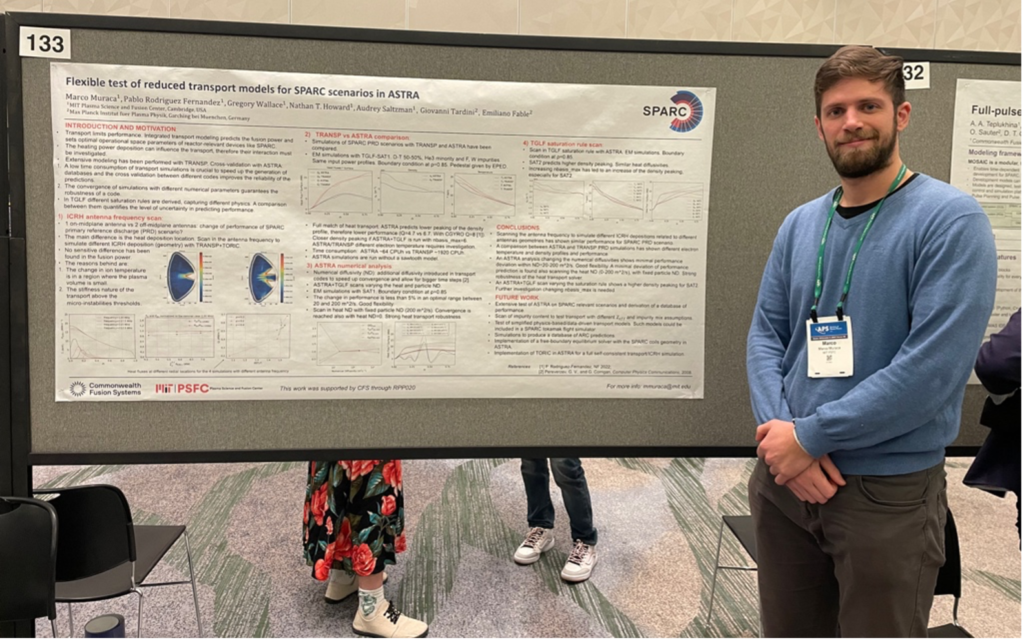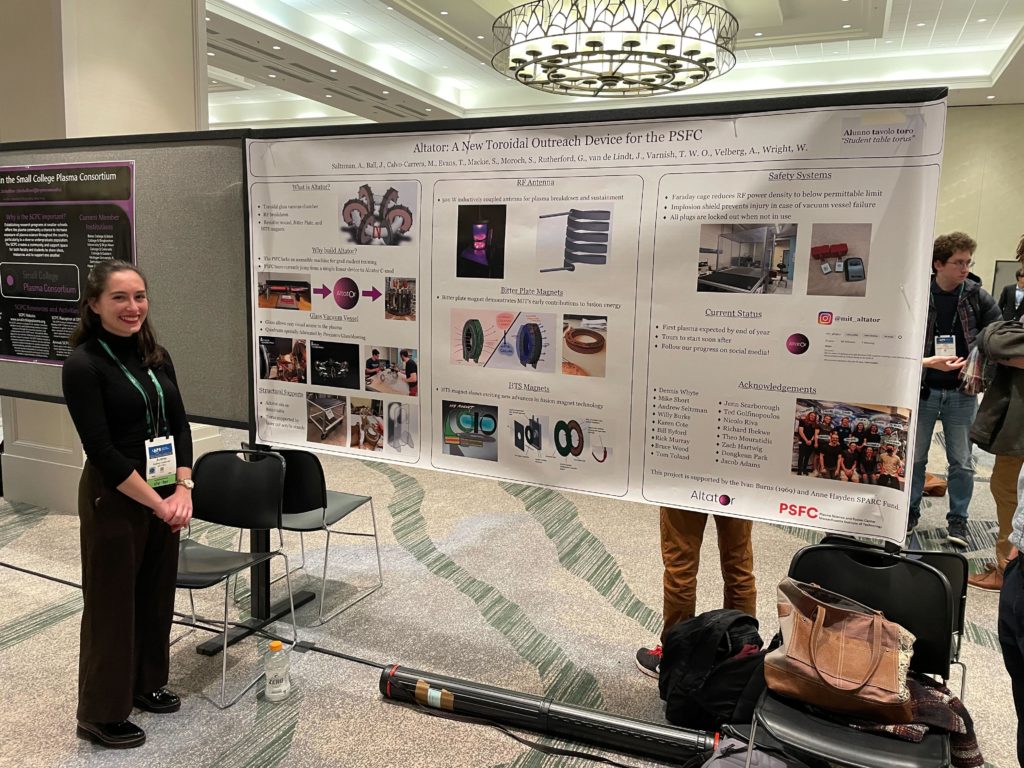Six first-author contributions from MFE-IM members at DPP 2023!
This year’s APS-DPP conference was a special one for the MFE-IM group, as it was the first time since the formation of the group with significant MFE-IM presence. In Denver (CO), MFE-IM students, postdocs and scientists enjoyed meeting with collaborators, learning what the US fusion community is up to and getting feedback on their research. Apart from numerous co-authorships, MFE-IM members presented six first-author contributions:

Audrey presented a numerical investigation of turbulence dynamics to help validate transport models against experiments. The common assumption of incremental diffusivity (how the electron heat flux responds to variations in electron temperature gradients) being equal to heat pulse diffusivity (derived from heat pulse propagation experiments) is challenged in Audrey’s work. She talked about the importance of the evolution of ion temperature during electron heat pulse propagation experiments, the radial sensitivity of the inferred diffusivities and the effect of collisionality. Audrey’s work points towards a more careful consideration of these issues when interpreting experiments and comparing them to simulation in model validation studies.
Arsene presented results of calculations of impurity coefficients of diffusion (D) and convection (v) in DIII-D H-mode plasmas as a function of the charge state Zimp.
The results showed specific trends of D(Zimp) in ITG and TEM dominated plasmas. D(Zimp) ~ Zimp in TEM and D(Zimp) ~ 1/Zimp in ITG, consistent with previous gyrokinetic modeling results. Linear stability was calculated using the CGYRO and TGLF models and transport coefficients were obtained utilizing the TGYRO solver.
Next steps will consist of calculating the transport coefficients with non-linear CGYRO and validating results against experimental measurements in the DIII-D tokamak. This work aims at contributing to a better interpretation of impurities’ emission in future tokamak devices, which are anticipated to be mainly ITG dominated.


Nathan presented predictions of performance in SPARC, ITER and ARC-class reactors using non-linear gyrokinetic simulations and the PORTALS framework, which leverage recent advances in GPU acceleration and surrogate-optimization techniques.
The simulations predicted Q~8 burning plasma conditions in SPARC PRD with ITG dominance in the core. For the density peaking, excellent agreement was found with empirical scaling laws. ITER Baseline Scenario was also predicted to achieve its burning plasma conditions with Q~10 and 500 MW fusion power. The ITER simulations pointed to potential optimization and suggested a lack of isotope effects in the core turbulence.
Nathan also discussed results for ARC-class reactors, which show similar features to other inductive burning plasmas. These results suggest that ITER and SPARC operations should directly inform ARC operational space.
Marco had a contributed poster with various integrated modeling studies of SPARC plasmas.
Comparison between SPARC PRD performance with different antenna geometries was investigated with TRANSP+TGLF+TORIC. The results show minimal changes (below 5%) with 1 on-midplane or 2 off-midplane ICRH antennas, consequence of transport stiffness and small near-axis volume.
A comparison between TRANSP and ASTRA simulations of the SPARC PRD scenario with same heat fluxes revealed different kinetic profiles predictions, pointing to discrepancies in the transport solvers. This was further investigated with TGLF standalone simulations, building confidence in the ASTRA predictions. Furthermore, an optimal range of numerical diffusivity in ASTRA to aid convergence was found, demonstrating that the flux-matching solver is robust.
Future work includes the construction of an extensive database of SPARC predictions, including scans of impurity content, and the coupling to fast transport models, free-boundary solvers and heating modules.


Pablo delivered an invited talk on the use of first-principles turbulence simulations to help the planning of the first campaign in SPARC. This was enabled by the PORTALS framework, together with the GPU-accelerated CGYRO code to model nonlinear gyrokinetics. Pablo discussed how the reduced cost of the predictions allowed the study of a dozen core scenarios in non H-mode conditions in SPARC. The simulations results are being used to help plan how to best operate SPARC during the first campaign to achieve performance goals, i.e. breakeven (Q>1) for the first time in magnetic confinement fusion.
Audrey had double duty at this year’s DPP meeting. She presented, on behalf of her team, the Altator project, a new toroidal outreach device being designed, built and operated by PSFC graduate students. This device will serve to teach the main concepts of magnetic confinement fusion to the main public and students when visiting MIT and the PSFC. Graduate students on the Altator team, regardless of their main research (experimental, modeling or theory), are having hands-on experience in the lab, which they pursue as a side project.





